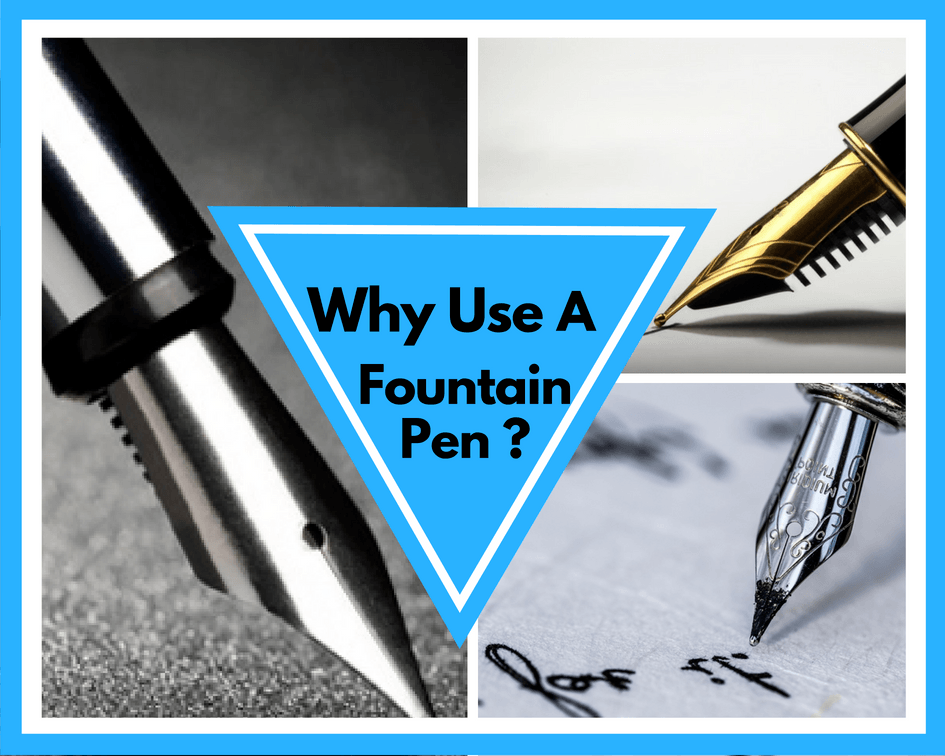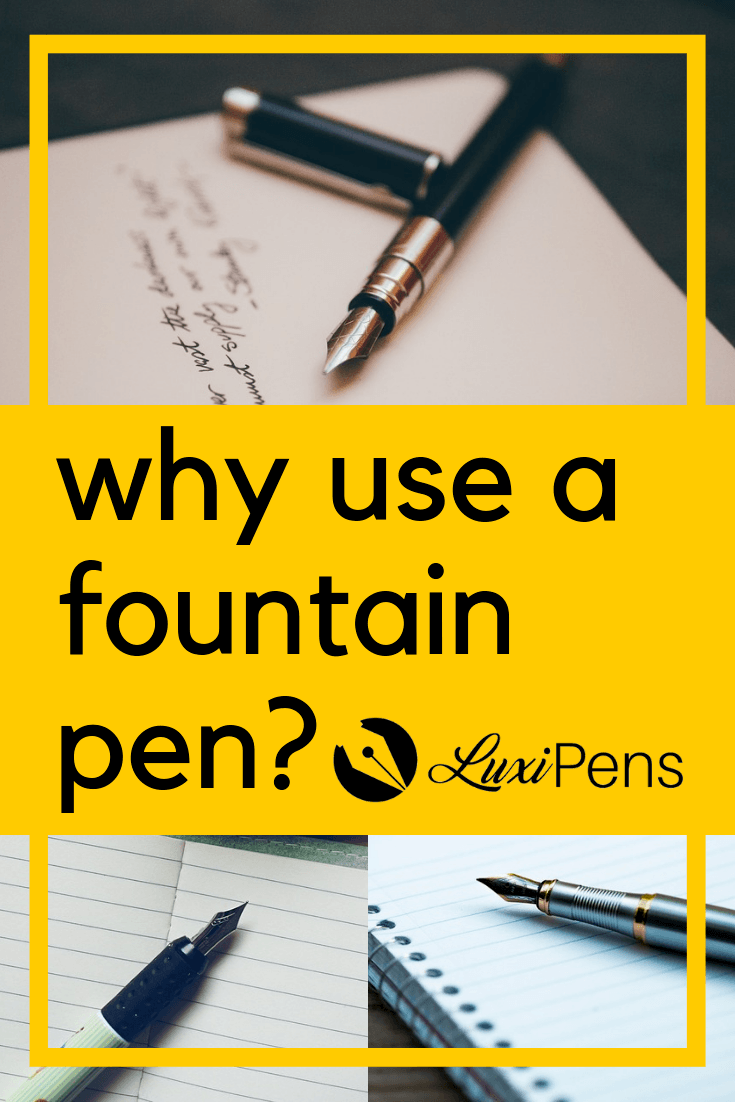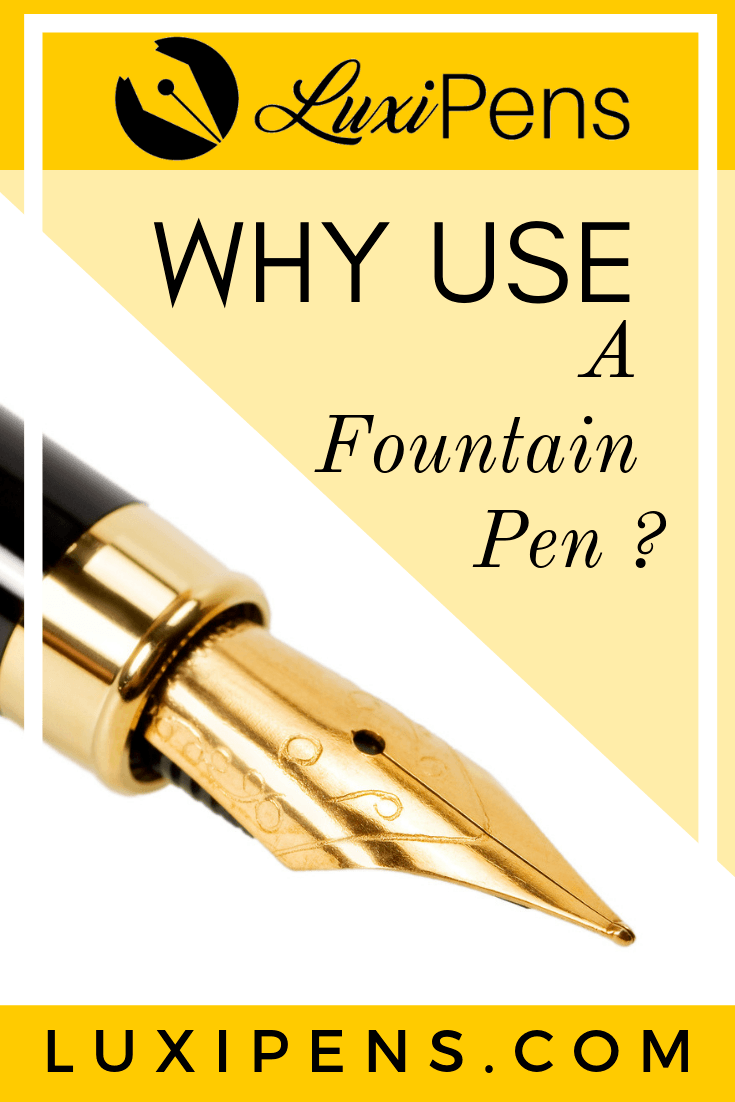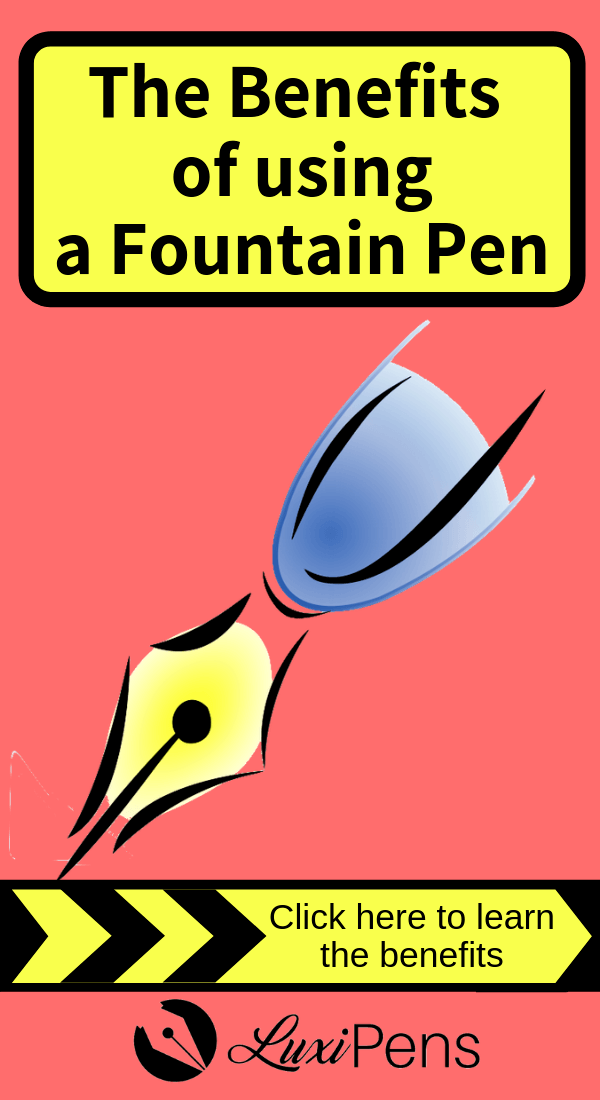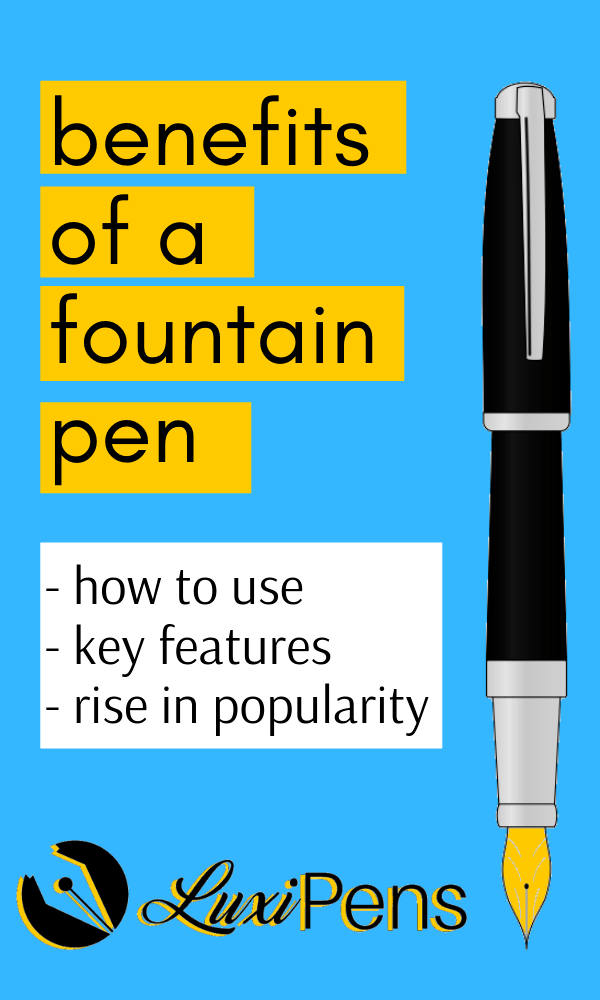Why use a fountain pen when you have every digital and technological instrument available to you?
In this modern day and age, using a fountain pen might seem like a giant leap backwards in time.
After all, who uses fountain pens these days? People are barely writing, let alone, writing with a fountain pen.
It might come as a surprise to you, but there are several benefits to writing with a fountain pen:
- 1It improves handwriting
- 2It's a relaxing, stress-reducing activity
- 3It offers a good alternative to the artificial, unsatisfying electronic and digital world
- 4It allows a writer to reconnect with oneself (meditative)
These are only a few benefits of writing with a fountain pen. There are several more advantages which you will discover after the experience of writing with a fountain pen for the first time. If you’d like to begin the fountain pen journey, check out our recommended products, where you will find several dazzling options.
Why are fountain pens so popular?
Fountain pen popularity has been on the rise over the past several years and perhaps decade. People find writing with a fountain pen to be a deeply immersive and engaging experience. One that captivates the senses and allows the writer to escape into another realm, releasing oneself from the burdens of daily digital distraction.
Writers are engrossed in this alluring activity. Writing with a fountain pen allows self-expression and self-exploration. A lovely side-effect are the results, which you can share with friends and family through lettering, calligraphy, special thank you notes, and gift cards. It's a great way to share the experience and show-off your penmanship. In an era where everything is digital, now you can bring a tangible piece of artwork as a gift to any occasion.
Why are fountain pens better?
Fountain pens have numerous benefits and applications. Because they are so versatile (journaling, drawing, calligraphy), they offer users an array of pleasures to choose from, allowing for a more personal and customized mode of self-expression. Rather than having to fit in a box, the writer can choose the box.
Are fountain pens worth it?
If you desire a simple pleasure in life, which only requires two items: a fountain pen and a writing surface (paper, canvas, etc), then yes, fountain pens are worth it. Why are fountain pens worth it? Compared to other hobbies out there, fountain pens are relatively inexpensive. You can indulge and purchase a high-end, quality, luxury fountain pen and it will last you a lifetime. A luxury fountain pen is a treasured gift which you can pass down to family and gift to close friends. If you turn your writing habit into a successful career, your pen then becomes an investment and a treasured heirloom - a remembrance of how it all got started.
Are expensive fountain pens worth it?
Most people may see expensive fountain pens are costly at the outset. Yes. Paying $200 or more for fountain pen may seem lavish and extravagant. But actually, they are a wise investment. A fountain pen has great resale value. If kept in great condition, it's much easier to resell a fountain pen and receive your original cost or more.
High-end fountain pens appreciate in value. They can become collector's items and fetch a pretty penny upon resale, especially if it is a limited edition or if the pen becomes discontinued. Ultimately, purchasing a top of line, luxury fountain pen is a wise investment.
Are fountain pens better than ballpoint?
Compared to other pens on the market, such as the ballpoint, the fountain pen is definitely worth it. Although, ballpoint pens are ubiquitous and reusable (yes, you can *refill* a disposable ballpoint), they are by far the most destructive to the Earth, both in manufacturing them and disposing of them in a landfill. Ballpoints are cheaper, but much more damaging to our environment.
For more information on the Environment Impact of a Ballpoint vs Fountain pen, read our article:
When it comes to value, fountain pens win in this category as well. Unfortunately, ballpoints carry no real value because they don't yield as much on the secondary market as a fountain pen does. Ballpoints are all too common, have a simple design (with no special parts like nibs and feeds), and hence this lowers their inherent value.
Advantages of Fountain Pens
Fountain pens are a very personal item, much more so than a ballpoint or any other writing instrument. Why? Because fountain pens conform to your personal writing style, down to your unique stroke. After some use, the nib of the fountain pen will adjust to your particular way of writing. There is an 'adjustment' period with a new fountain pen. But after some time, the fountain pen will become a part of you and you'll have a difficult time even lending someone your fountain pen.
Because of the wide variety of fountain pens available on the market, you are sure to find a special one that fits your specific needs. If you're an avid writer, sketch artist, copious note taker, calligrapher, or letterer, there's a fountain pen made for you.
For more detailed information choosing the best fountain pen for you, read our article:
“How to Select the Best Fountain Pen”
Personalizing Your Fountain Pen
Once you receive your first fountain pen, you'll want to customize it to fit your specific writing needs. By customizing your fountain pen, and selecting the right shaft, nib, ink, and paper, you can easily make it reflect your taste and personality. Many fountain pen enthusiasts find that a single pen isn’t enough, and amassing a collection allows you to change pens or ink colors depending on your mood.
Shaft / Barrel: Selecting the shape and weight of the pen shaft is usually a matter of personal preference, so trying out a few different pens will help you decide what you like best. Additionally, the shaft of the pen can be made from a wide variety of materials, and all of these come with different pros and cons.
*Note: Mobile devices - scroll right to see entire table.
Shaft/Barrel Material | Pros | Cons |
|---|---|---|
Acrylic | ||
Animal horn and bone | ||
Celluloid (a plastic made from cellulose) Bakelite, and Lucite, vintage types of plastic | ||
Ebonite (a form of rubber) | ||
Makrolon | ||
Metal (including stainless steel, brass, and titanium) | ||
Resin (plastic) |
Nib: The fountain pen’s nib is the part that controls the flow of ink from pen to paper. Experimenting with different nibs is a great way to branch out when you’re first getting into fountain pens. Details of the nib that can vary include the tip thickness, flexibility, and the material from which the nib is made (also called the tipping material).
Ink: There is a wide spectrum of ink colors available for fountain pens, including unusual and unique options that can add a fun twist to your writing. For example, De Atramentis Plum is a turquoise colored ink that’s plum-scented. J Herbin 1670 Rouge Hematite is an earthy red color that’s sprinkled through with specks of gold.
This post contains affiliate links. See our disclosure page for more information.
Paper: The best paper for fountain pens depends on the type of writing that you’re doing, and over time you might find that you prefer different kinds of paper for different projects. Paper comes in different textures, weights, and colors.
When you use a fountain pen, you join the fountain pen community.
There are lots of places that you can connect with other fountain pen lovers, both online and off. These include online forums, social media, and in-person meet-up groups and conferences. Here’s just a small sampling of places you might want to check out:
Connecting with the fountain pen community is an excellent way to take your love of fountain pens to the next level. It’s a place to ask questions and get recommendations, but most importantly, it’s a way to create relationships with people who love fountain pens as much as you do.
Fountain Pens are Ideal for Everyday Use
Many people think that fountain pens are only for special occasions, but a fountain pen can easily become your everyday pen. Using a fountain pen as your standard writing utensil comes with lots of benefits. Regular use of a fountain pen, coupled with routine cleaning, will help ensure your fountain pen stays in working order. Plus, as detailed earlier in this article, swapping out your usual pen for a fountain pen can be a way to avoiding repetitive stress injuries and hand fatigue.
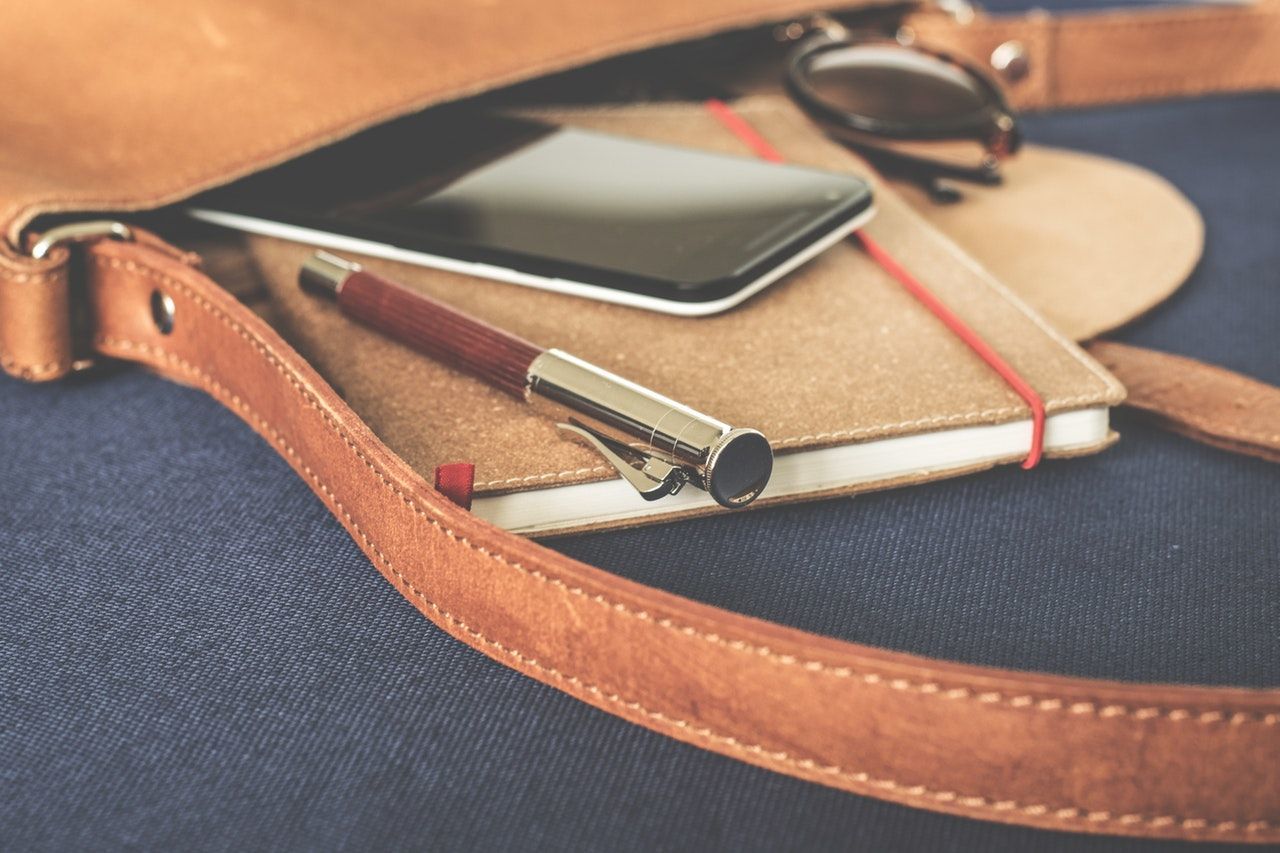
Choosing the right pen for daily use (which is often referred to as everyday carry, or EDC) should be done thoughtfully. A good choice is a midrange pen, which offers a balance of quality and price – an important factor if you’re the kind of person who loses pens! Midrange pens offer some of the features that less expensive pens do not, but which many fountain pen users consider to be essential, such as built-in filling systems. For recommendations on mid-range, everyday carry fountain pens, see our post on the “Best Fountain Pens Under $100.”
Additionally, you’ll want to consider the ink and paper you use as your go-to options. A fast drying ink can be convenient for daily writing, as this will cut down on smudging. Good selections in this category include Noodler’s Bernanke Black or Polar Blue. But there’s no reason to limit yourself to blue or black for routine use – maybe you’d prefer to write your daily to-do list in purple, dark green, or burgundy red? A colorful ink color is sure to make your mundane writing tasks less boring!
In terms of paper, some favorites among fountain pen users include notebooks and notepads made by the brands Rhodia, Leuchtturm1917, and Levenger. Rhodia’s R pad is great for note taking with fountain pens, as it offers a thicker paper that will prevent bleed-through of the ink. If you’re looking for a planner to keep track of your schedule, consider the one made by Leuchtturm1917. For journaling, Levenger’s notebook combines thicker paper with a lay-flat spine, ideal for writing long entries.
Improve Your Handwriting With Fountain Pens
Yet another key reason for using fountain pens is the improvement you may see in your handwriting when writing longhand on a regular basis. Handwriting is a quickly disappearing art, and many people feel a sense of loss as they notice their handwriting deteriorating over the years. Many people choose to pick up a fountain pen for the first time because of a motivation to re-learn how to write in cursive. Fountain pens are ideal for tackling this challenge, since their constant flow of ink is conducive to the connected letters of the cursive alphabet.
Beyond the satisfaction of relearning a lost skill, handwriting practice for adults has many benefits. Studies have shown that writing by hand helps people remember what they wrote down. Handwriting also helps to bolster cognitive function as you get older, and will help keep your brain sharp for longer.
There’s also the pleasure and excitement of seeing your handwriting become more beautiful as you practice. Using a fountain pen requires a slight change in how you write, since it must be held at a different angle than a ballpoint pen in order for the ink to flow smoothly. As you practice this new pen position, try your hand at new styles of writing.
For more in-depth info on holding a fountain pen, read our article:
“How to Hold a Fountain Pen”
Fountain Pen Handwriting Styles
Every writer who uses a fountain pen develops a unique style that reflects their personality. Some choose to write in all caps, which gives a uniform, formal look. Other writers develop a highly stylized form of penmanship or write in cursive. Over time and with practice, you’re sure to find a style that reflects you.
A common misconception is that fountain pens are the primary tool used for calligraphy. While most calligraphy is done with dip pens, it is possible to use a fountain pen for calligraphy by purchasing special nibs. These include italic nibs, which are blunt and flexible, and ideal for writing in italics or Gothic script. Extremely flexible nibs, sometimes called “wet noodle” nibs, allow for a variation in thickness of the pen’s line, which is an essential element of some styles of calligraphy. Fountain pens can be a useful addition to a calligrapher’s toolbox. On the flip side, fountain pen lovers might find learning the basics of calligraphy a natural extension of their love for pens.
So often, writing can be a mundane task – something we do during the course of work, or to jot down a to-do list. Pens, and ballpoint pens in particular, are such common objects that we use them without thinking about it too much.
Using a fountain pen instead brings attention to an object that’s often overlooked. Since starting to use a fountain pen, it’s dawned on me how this seemingly small choice reflects my values, such as investing my money in objects that will last many years, honoring quality craftsmanship, and sustaining traditions that are disappearing in the digital age.
To my delight, I also realized that there are additional benefits to using a fountain pen, particularly since I’m a writer. I now feel more inspired to sit down and write, and I look forward to the time I spend using my fountain pen. Collecting fountain pen supplies is now a new hobby of mine, and the thrill of using new materials fuels my creativity even more. Discovering fountain pens has made me wonder how I can be more thoughtful in the everyday objects I use, and how choosing them can better match my lifestyle and values. The fountain pen, though, is a great place to start.

